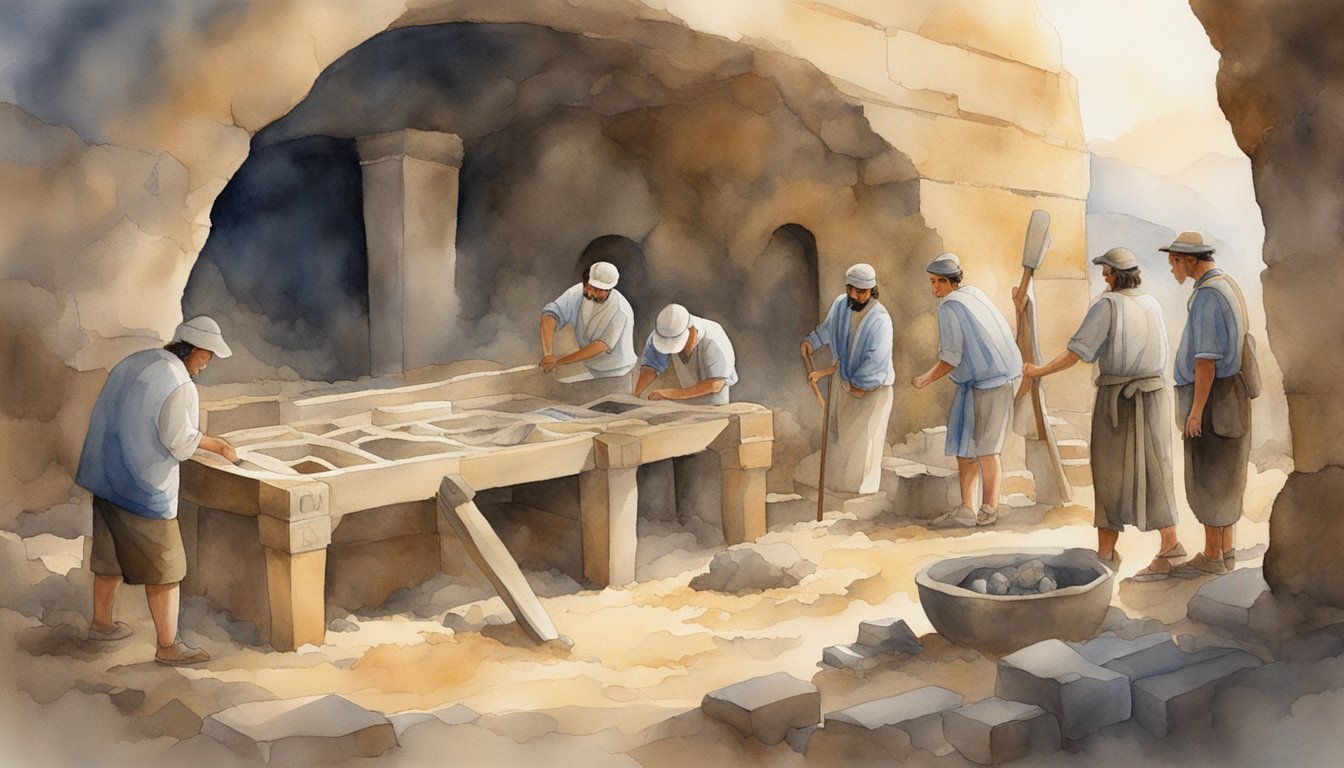The Historical Significance of Jesus’ Tomb
The tomb of Jesus Christ holds profound significance, embodying deep religious importance and a rich tapestry of history. This sacred site has been a focal point for archaeological study and continues to inspire cultural and religious devotion.
Discovery and Recognition
The identification and veneration of Jesus’ tomb date back to the 4th century when Roman Emperor Constantine’s representatives located what was believed to be the burial site. Under Constantine’s orders, the construction of the Church of the Holy Sepulchre began, marking the place of crucifixion, Golgotha, and Jesus’ burial. Later excavations revealed a structure known as the edicule, which is considered to house the tomb of Christ within Jerusalem’s Old City.
Archaeologists and biblical scholars have long debated the tomb’s exact location, with discoveries often yielding more questions than answers. Regardless of the ongoing debate, the Church of the Holy Sepulchre is recognized as the site where many believe Jesus was buried.
Cultural and Religious Importance
For centuries, the tomb has been a vital part of Christian tradition and Easter celebrations, symbolizing the site of Jesus’s resurrection. The tomb and edicule within the Church of the Holy Sepulchre attract pilgrims worldwide, serving as a physical connection to the New Testament narratives.
The reverence of Jesus’ supposed tomb extends beyond religious observances. It represents a confluence of history, theology, and archaeology, providing insight into Jerusalem’s complex past. The burial place is a cultural anchor in Jerusalem’s Old City, where events that shaped Christian history are commemorated. Historians note the site’s significance alongside adjacent historical structures, such as the remnants of a Roman temple, which reflect the layers of religious control over Jerusalem throughout millennia.
Archaeological and Restoration Efforts

The investigation into the tomb traditionally believed to be the final resting place of Jesus has been marked by significant archaeological and restoration activities. Technology and expertise have revealed surprising details and have ensured the structural preservation of this revered site.
Scientific Analysis and Findings
In the heart of the Church of the Holy Sepulchre, scientists from the National Technical University of Athens conducted thorough research on the Edicule, the chapel housing the tomb. The analysis included the burial bed, a limestone surface long believed to be where the body of Christ was laid. This momentous project marked the first time the burial bed was exposed in centuries, revealing a limestone cave encased beneath a marble slab. The researchers collected samples and photographs to further understand the tomb’s history and to gather archaeological evidence for analysis.
Restoration Projects
The restoration work overseen by Antonia Moropoulou, the lead scientist, and her team from the National Technical University of Athens focused not only on the tomb but also on preserving its surrounding structures. An important aspect was to address the issues caused by centuries of environmental and human interference. The restoration stabilized the marble cladding and reinforced the Edicule while respecting the cultural heritage represented by the Coptic and Greek Orthodox Patriarchate. The National Geographic Society, with its archaeologist-in-residence, Fredrik Hiebert, provided resources for the preservation process. They also offered a means for the public to subscribe and engage with the conservation efforts, including a virtual reality tour of the tomb.

